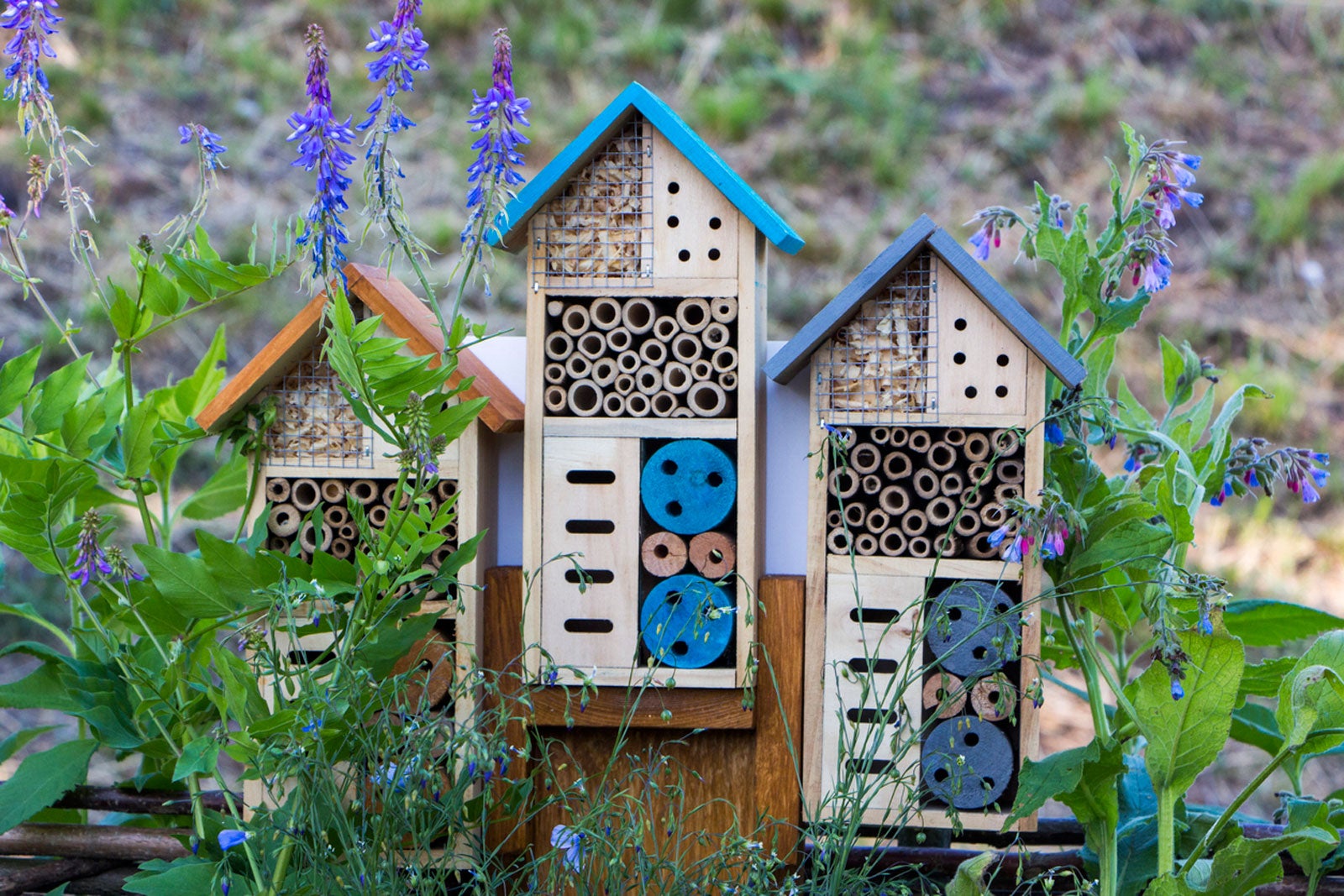DIY Insect Hotel: How To Make A Bug Hotel For Your Garden

Building a bug hotel for the garden is a fun project to do with the kids or for adults who are kids at heart. Building homemade bug hotels provide a welcome refuge to beneficial insects, who pollinate our fruits and vegetables. Interested in constructing a DIY insect hotel? Read on to learn how to make a bug hotel.
Why Build a DIY Insect Hotel?
All insects don’t fly south when winter approaches. Some board down the hatches and go into diapause, a suspended state of development, kind of like hibernation. Homemade hotels for insects fill a role that many people think doesn’t need to be filled. After all, don’t insects find shelter and a place to raise the next generation on their own anyway?
It turns out that many gardeners are too tidy. Many of us remove all waste from our landscapes, and in the process, wind up removing insect homesteads. Bee homes have become all the rage, and while bees are champion pollinators, other insects are beneficial to the garden, too. Of course, ladybugs serve a valuable service by eating aphids, but parasitic wasps, lacewings, hoverflies, and even spiders all do their part to keep predator insects at bay. They all deserve a safe insect hotel in which to hide out.
Building your hotel is part garden art and part winter habitat for these beneficial insects.
When building a bug hotel, you may choose to focus on one species of insect or create hotels for multiple species of insect guests. Creating your own bug hotel can be as simple or as elaborate as you want. Providing a variety of plant material will encourage a variety of insect friends.
It’s important to know how different insects overwinter; for instance, solitary bees (those that don’t sting or build a colony) prefer to nest in hollow stems over the winter, while ladybugs overwinter in groups among dry plant material. Hoverflies overwinter as pupae in leaf debris, straw, or pinecones, and lacewings in rolled up corrugated paper.
How to Make a Bug Hotel
DIY insect hotels can be made out of recycled material such as bricks, drain tiles, pallets, and even stacks of old logs. Imitate nature to the best of your ability by adding leaves, straw, mulch, pinecones, and sticks to create “rooms.” Place your homemade bug hotels in a shady area that receives morning sun with afternoon shade.
Gardening tips, videos, info and more delivered right to your inbox!
Sign up for the Gardening Know How newsletter today and receive a free copy of our e-book "How to Grow Delicious Tomatoes".
Solitary bees need a hotel with hollow holes. Their hotel can be made out of bamboo sticks or hollow stemmed plants set in drainage tiles, cans, or hollow logs to keep them dry, or drill holes in a block of wood. Drilled holes should be at least 6 inches (15 cm.) deep and smooth to protect their delicate wings.
Bumble bees die out during the winter with the exception of the new queen. A simple bug hotel you can make suitable for the new royal is an upturned flowerpot filled with straw or garden debris.
Building something to entice the ladybugs is as simple as packing some twigs and dry plant material together. This will provide them with shelter and food during the long cold winter.
Parasitic wasps are extremely beneficial in the garden and help to control pests. As with solitary bees, a piece of wood with holes drilled into it makes an excellent parasitic wasp bug hotel for the garden.

Amy Grant has been gardening for 30 years and writing for 15. A professional chef and caterer, Amy's area of expertise is culinary gardening.